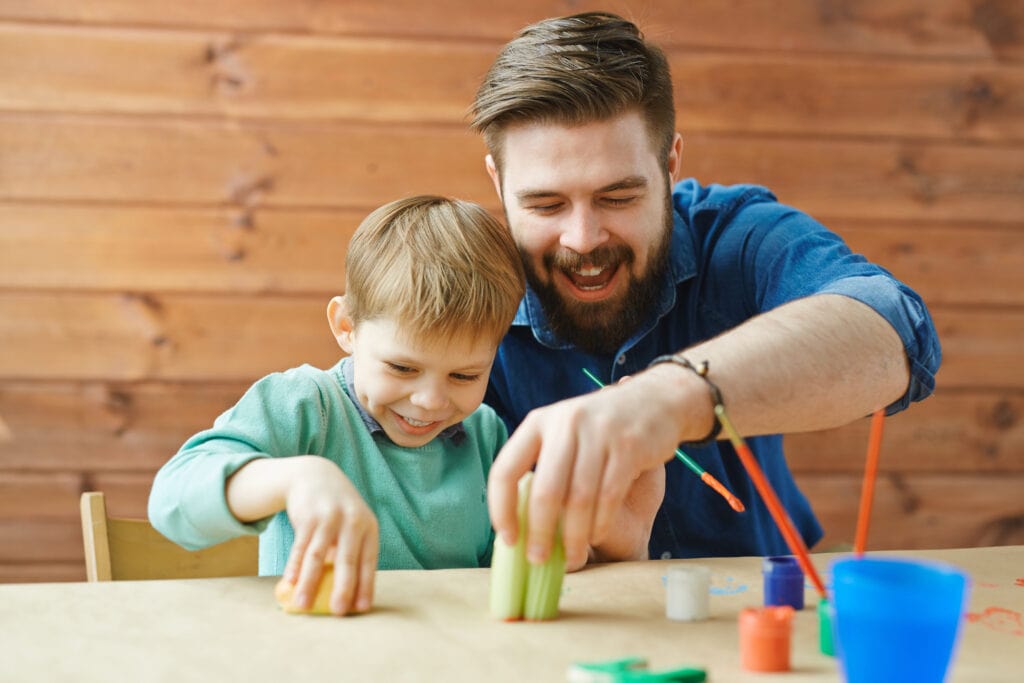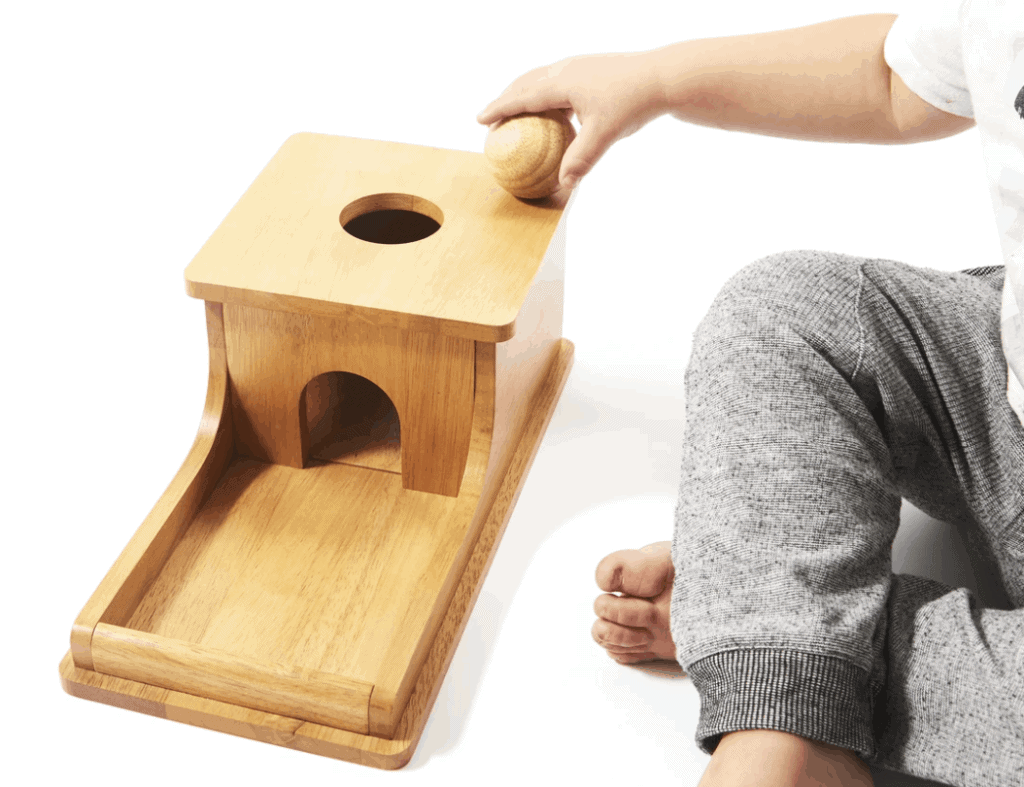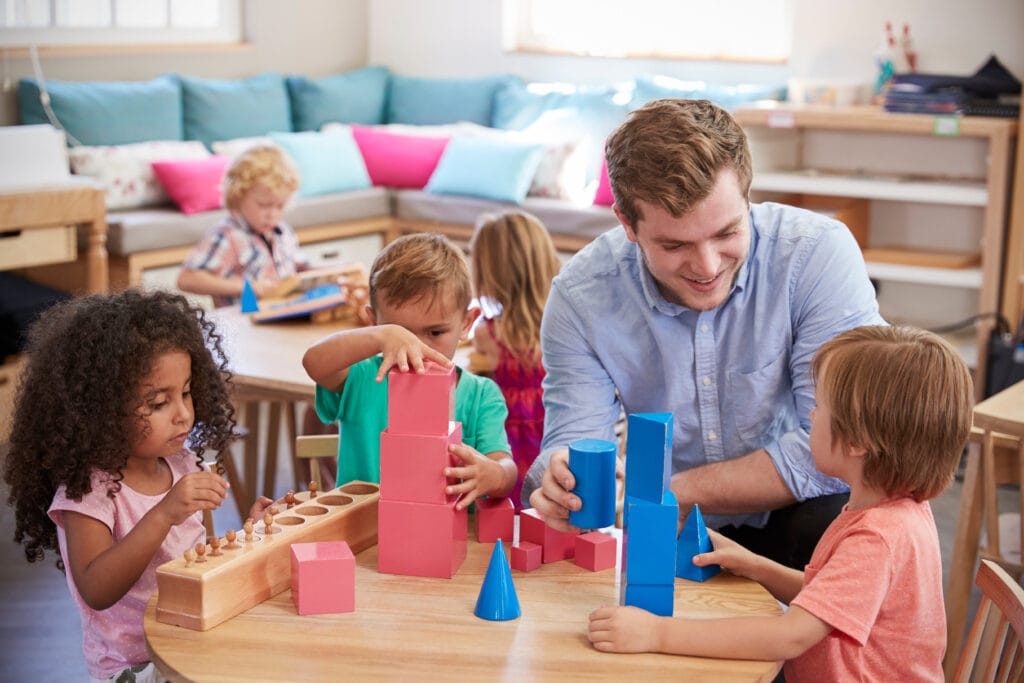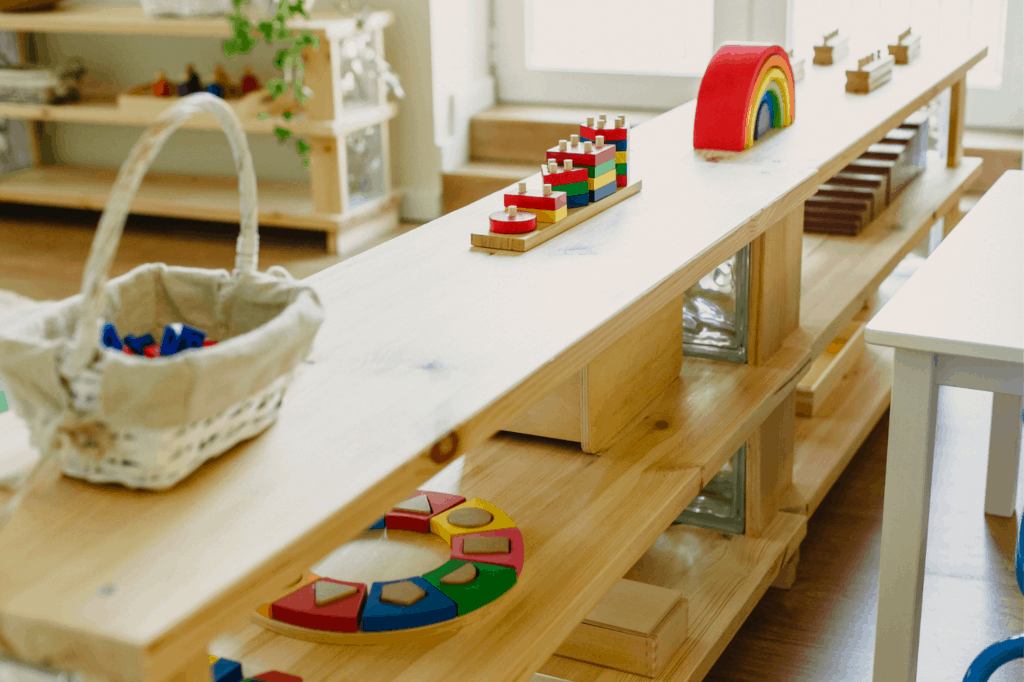Teaching your child independence from a young age is essential to their confidence and success in adult life. When introduced to the concept of
Montessori furniture pieces are home items inspired by the teachings of Dr. Maria
Montessori furniture isn’t just about how tall or short the product is. When you incorporate Montessori’s educational structure into your home life, you want to ensure that your child will benefit emotionally, cognitively, and socially as they learn to use the furniture. Continue reading to learn more about what
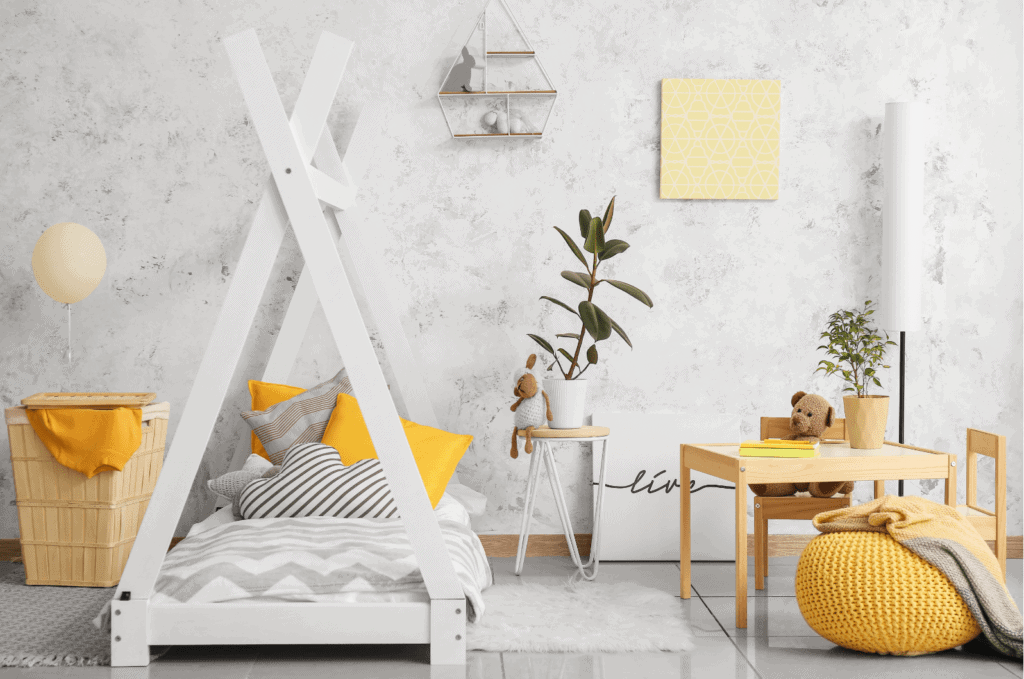
What is Montessori Furniture?
To understand
For over a century,
This concept is designed to meet the following aspects of your child’s life and health (Source: American
- Cognitive functioning and capacity
- Emotional balance and self-regulation
- Social confidence and wellbeing
- Physical health
When you apply
Ultimately, the teachings aim to nurture a child’s autonomy and encourage them to become a leader when they mature. But how did this all begin, and what does this have to do with furniture?
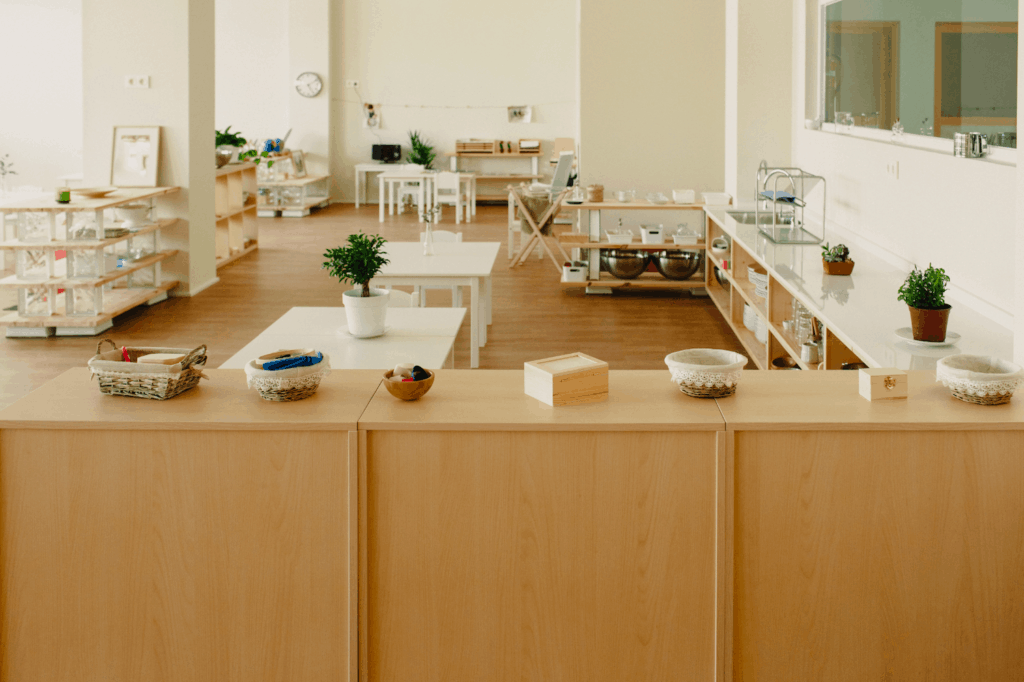
The History of Montessori Education and Furniture
As mentioned above, the Montessori Method was created by Dr. Maria
Dr.
With this vision,
- Prepare their own meals (the advent of the Montessori kitchen environment)
- Clean their living and play space (the genesis of the
Montessori home) - Participate in hands-on educational programs and activities (the beginning of the
Montessori classroom)
Soon after the children began the program, Dr.
Since then, this educational style has exploded in popularity throughout the world. Parents everywhere are encouraged to incorporate these practices into their daily lives for the same benefits that kids in 1906 reaped.
With all this in mind, it is easy to understand that

Best Montessori Tables and Chairs
Many families use
A
- Independence: Like all other aspects of the
Montessori lifestyle, your child will learn to depend on themselves for this facet of home life. At their table, they will not have to wait for you to lift them into a highchair or feed them. - Dining etiquette: Your child will learn what is and is not appropriate at the table concerning their behaviors and proper table settings.
- Space use: Their table does not have to be used for dining exclusively. Encourage your child to use their table for work and food preparation as well. This way, they’ll learn how to make this surface into a multipurpose space.
Examples of great
- Best to grow with your child: Sprout Kids Adjustable Montessori Weaning Chair & Table Set. This is a 20” x 30” Baltic Birch table with interchangeable legs, including sizes 12” (6-18 months), 15” (1-3 years), and 20” (3-8 years), so you can adjust the piece as your child grows. The chair heights are designed for the following age groups:
- 5”: ages 6-12 months
- 7”: ages 1-2 years
- 10’: ages 2-3 years
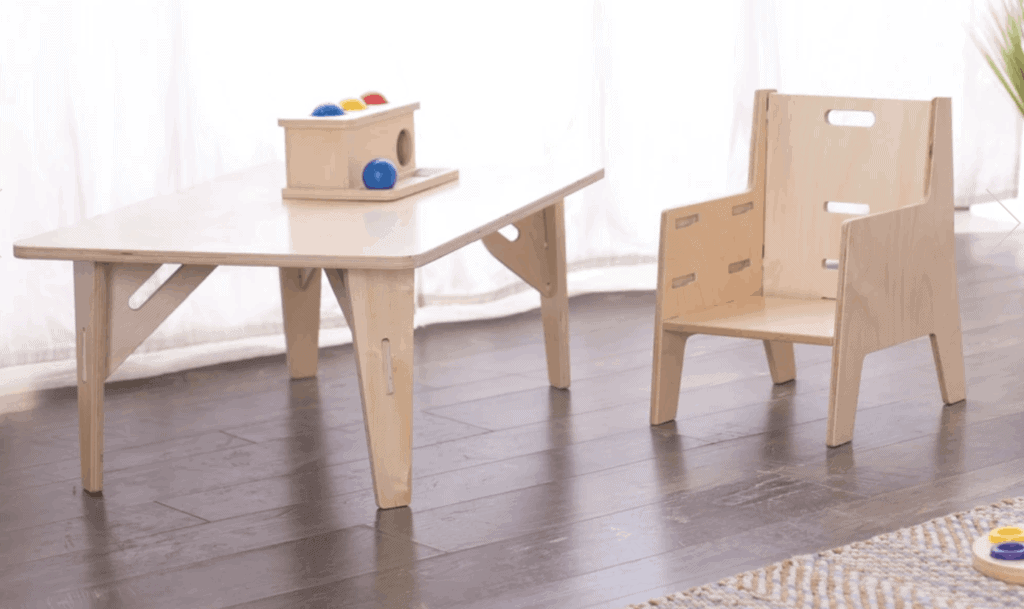
- For a toddler classroom: Wayfair Kids 5-piece Rectangular Activity Table & 5”H Chair Set. Made of Angeles Natural Wood, this table is designed to host four children between the ages of 2-4 years old. It’s great for both indoor and outdoor use, and is 30” long and 48” inches wide.
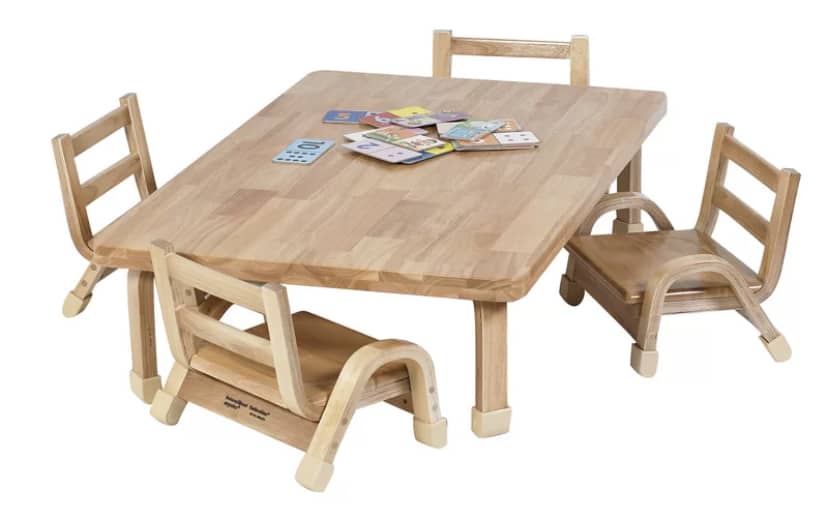
- For added storage: Costzon 3 in 1 Convertible Set with Storage: This multipurpose set has a removable top that is blackboard on one side and whiteboard on the other with storage underneath.

- Best Budget Option: Ikea Children’s Table and 2 Chairs: This 3 piece pine set is one of the most affordable options for a sturdy low kids table and chairs.
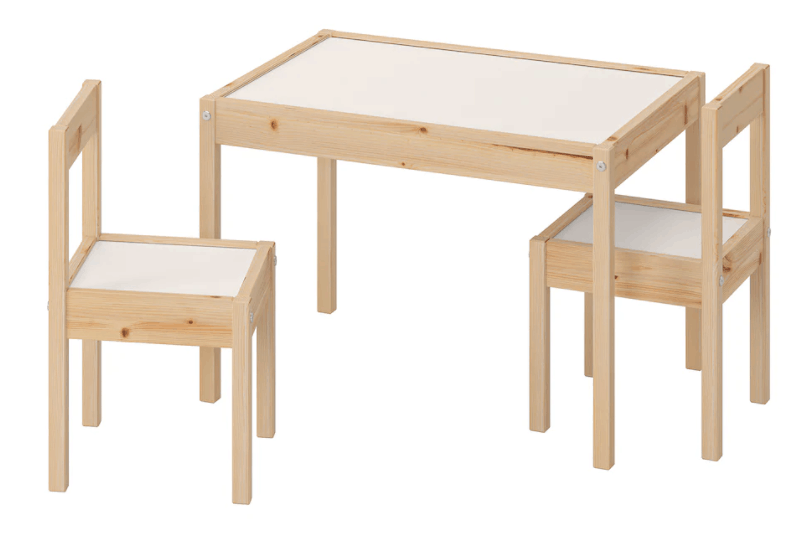
Best Montessori Shelves and Bookshelves
It is tough to remind yourself of the goal of
Montessori shelving should be characterized by the following attributes (Source: The Kavanaugh Report):
- Age-conscious accessibility: Consider your child’s height and awareness levels when selecting a
Montessori -friendly shelf for their bedroom or play area. Toddlers and young children may not do well with shelves that feature closed compartments (i.e., drawers and cabinets), so cube organizers (without cubbies) and other such open designs are a great alternative. Remember to keep their height in mind when choosing the shelf as well. - Coloration: This will depend heavily on your child and their natural response to colors and brightness. Some believe that proper
Montessori shelves should be light in color, so it stands out and encourages your child to interact with the piece of furniture. Others are just fine with incorporating brighter or darker pieces into their kids’ spaces. This all depends on what your child prefers and responds to. - Stability: This factor is, of course, critical to your child’s safety. You must ensure that the shelf is sturdy enough to remain in place when used by possibly rambunctious children. It should never be at risk of falling over.
Remember that you’ll need to update your child’s shelving as they age. This applies not only to the shelf’s structure but the objects stored on the shelf as well. For instance, you can create specific activities based on the composition of your child’s shelf. The best options for this are those centered on organizational skills.
For example, kids less than one-year-old would greatly benefit from having brightly colored toys stored on their open shelves. When it’s time to play with the toy sets or return them to their proper storage area, they can learn to identify specific locations in the shelf divisions and build organizational skills from a young age.
You can even consider theming the shelf for toddlers to encourage higher levels of engagement. If your child has a liking for certain kinds of objects or aspects of nature (e.g., specific seasons, animals, or locations), paint these elements onto the shelf and base their shelf experience on that. (If you like, you can use this as a teaching tool, helping them learn to identify specific animals or how to count with numbered cubbies, for example.)
The best
- KidKraft Bookcase with Reading Nook: The intriguing design are sure to draw your child into engaging with this shelf. It is dual purpose in that it provides your child with a sitting area to read the books they’ve just picked up from the shelf.

- ECR4Kids Open Back Storage Shelves: This budget-friendly option features a couple of different size options of a 24″ height or a 30″ height.

For a more complete list of our favorite Montessori shelving units, click here.
Best Montessori Beds
Your child’s
- Accessibility (just like the shelf)
- Independence, specifically because they should not have to depend on either parent to help them into or out of bed
- Note: Sleeping alone is already a challenge for many children. You want to give them as much autonomy as possible in their bedtime routine to ease their experience of sleeping alone. This may be difficult for parents that are co-sleepers, and, again, you will need to take your child’s specific personality into account when selecting their bed design. While some children may respond positively to this facet of the
Montessori lifestyle, others have trouble with the level of freedom it provides.
- Note: Sleeping alone is already a challenge for many children. You want to give them as much autonomy as possible in their bedtime routine to ease their experience of sleeping alone. This may be difficult for parents that are co-sleepers, and, again, you will need to take your child’s specific personality into account when selecting their bed design. While some children may respond positively to this facet of the
When choosing a
Remember that the height should enable them to reach all corners of their mattress while cleaning up, too, as you should be teaching them how to make their bed on their own. You don’t want to make this step of their maintenance and clean-up any more difficult than it should be, so ease the process with a reasonable height and width.
The best
- Infants: You and your baby should both feel safe and secure with a floor-height mattress.
- Note: When your baby learns to crawl, you can raise the bed slightly to a “low bed.” This allows them to begin learning how to freely crawl in and out of bed with as much freedom and safety as possible.
- Toddlers: These heights will vary as your child develops new physical capabilities. Of course, you shouldn’t make your child jump in and out of bed just because they’ve learned how to. However, you will need to increase the bed’s height when they transition from crawling to walking.
- Kids: At this stage, you can begin providing your child with the freedom to express themselves in their bedroom. You can incorporate bed canopies or get a “cubby” or “teepee” style to jumpstart their imagination.
Allow your child to exercise control over when they are ready to sleep (within reason). For this, you can give them access to specific toys and books before bedtime; ideally, those that help them wind down for the day. (For example, silent toys such as building blocks are great options, as they do not provide too much stimulation that might keep your child awake.)

Ideal
- Walcut House Bed Frame: This style of bed frame is the lowest to the ground without placing your mattress directly on the floor (which can cause mold issues). Size is 66.1″ L, 29.9″W, x 62″H.
- Dream On Me, Classic Design Toddler Bed: This bed is 57”L x 30” W x 28” H, and is more appropriate for toddlers instead of young babies. It is equipped with guard rails to maintain safety and available in multiple colors.
- Twin Daybed with Trundle, Wood Twin Size Bed: Great for inspiring a vivid imagination, this is a very minimalistic design for young boys and girls (and great for small bedrooms). Its dimensions are 78.7” L x 41.10” W x 12.2” H.
For more information on why, when, and how to use floor beds, check out this article.
Best Montessori Highchair
Many parents opt for a
- Adjustability: You should be able to adapt the seat as your child grows for both comfort and safety in posture (the footstool should be adjusted as needed).
- Removable tray: Ideally, you should be able to pull your child up to the table with you and the rest of the family so that they can eat alongside everyone else.
- Accessibility: Eventually, your child should be able to climb into the highchair themselves with minimal hassle.
Here is one of the best
- Tripp Trapp: An incredibly versatile design, this highchair is both ergonomic and highly adjustable. It allows your child to eat at the table with the rest of the family and is available in a wide array of beautiful colors.
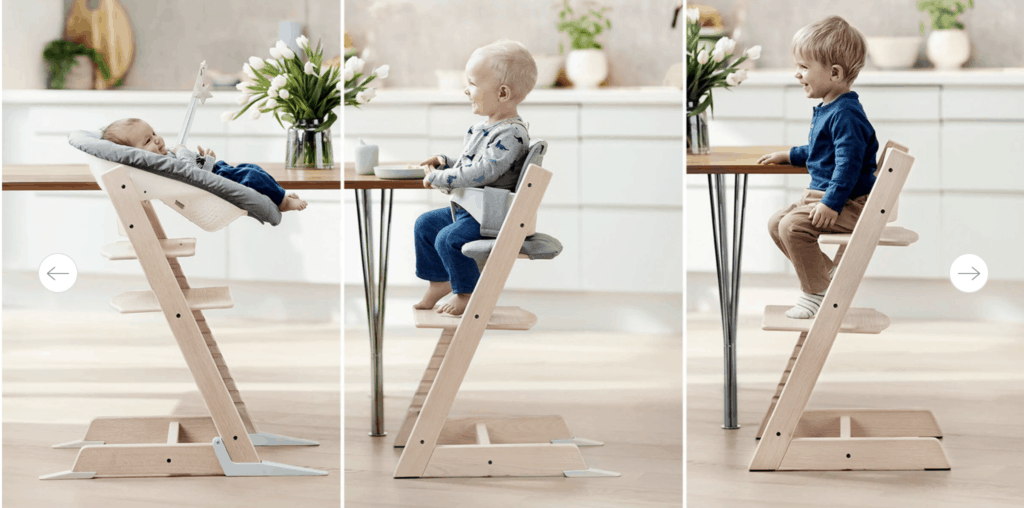
Best Montessori Kitchen
Families spend a lot of time in the kitchen. It is one of the main hubs of creative freedom, where both adults and children can express themselves in fun, exciting, and inventive ways. Thus, it is one of the perfect places for toddlers, adolescents, and teens alike to discover their autonomy and innovative capacities.
To practice
Keep the following in mind as you design your kitchen (Source: Montessori Life):
- Tables: According to experts in the AMS, the tabletop should not exceed 14 inches in height for your child to sit comfortably.
- Chairs: There are chairs specifically designed by Dr. Maria
Montessori , which you can identify by the slatted seats. These are intended to be very lightweight, perfect for your child to pick up and move around as they see fit, yet strong enough to provide support while sitting. - Table settings: Allow your child to learn how to properly set the table by providing them with the components of a standard place setting. For Stephanie Woo, this included:
- A pitcher*
- Glasses*
- A bin for cleaning
- Napkins
*When collecting your kitchen items, don’t be afraid to buy real glass. Woo noted that giving your child real glass for their table setting gives them the chance to experience real, genuine consequences if they fail to handle their belongings carefully. When they experience the sound and sight of shattered glass for the first time, they will undoubtedly learn to be more mindful of their kitchen conduct from then on.
Any time there is a spill or broken dishes, instruct your child to use the plastic bin, which, ideally, you will have stored underneath the table for accessibility. Additional kitchen materials, such as napkins, placemats, and utensils, should all be stored in a designated cabinet for your child to access on their own. (Avoid having them store their items in drawers, as this may discourage or hinder them from locating critical kitchen tools later on.)
The best examples of
- Farberware Professional Silicone Whisks
- Tovolo Stainless Steel Handled Mini Turner Tongs with Wide Silicone Tips and Grips
- Melissa and Doug Stir and Serve Kitchen Utensils Set
- Architec Original Non-Slip Gripper Cutting Board
- Calypso Basics by Reston Lloyd Powder Coated Enameled Colander
In Conclusion
The incorporation of
- Self-reliance
- Emotional stability
- Social confidence
- Physical health
Keeping these factors in mind, you are sure to provide your child with the best possible tools to grow within themselves and ensure that they gain autonomy for their future lives.


